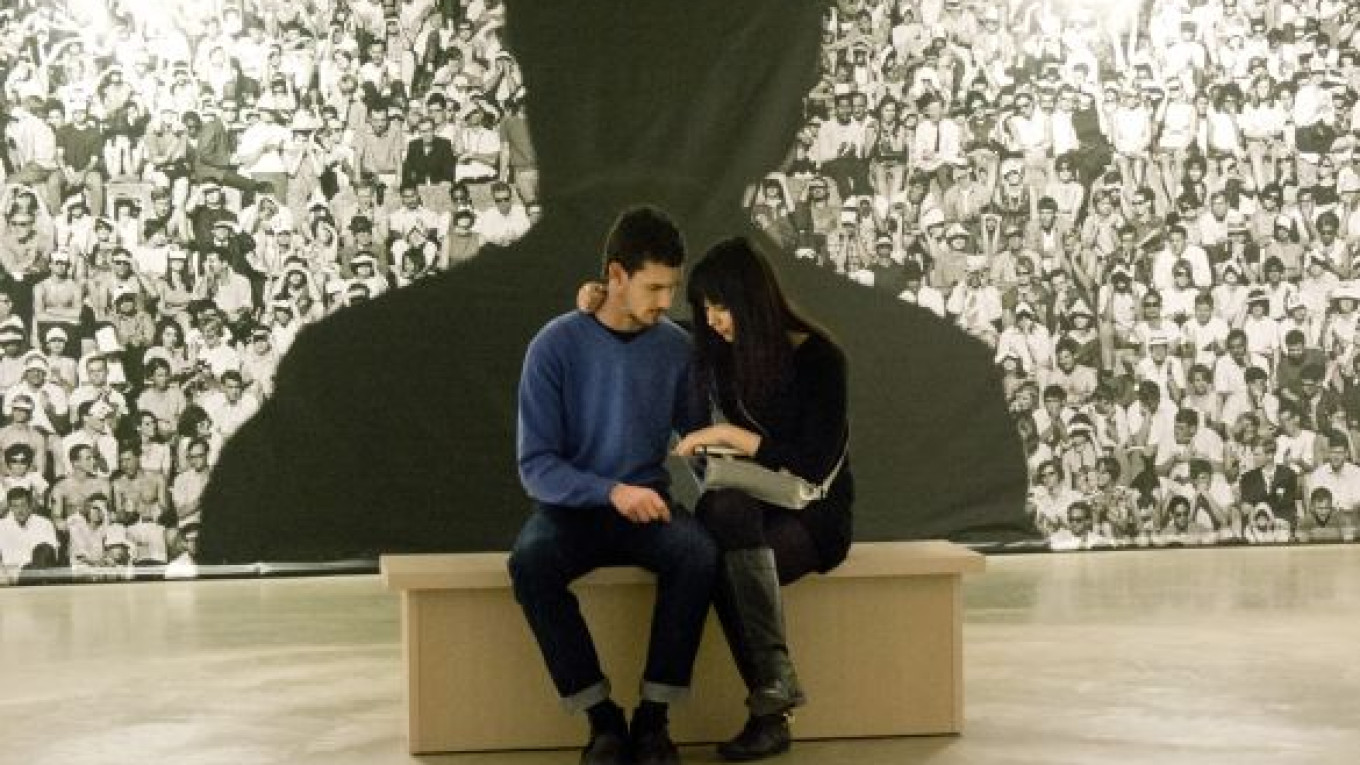The beauty and troubles of the American 1960s come to life at Steve Schapiro's retrospective exhibition "Living America," now on at the Lumiere Brothers Photography Center. The exhibition features over 100 works by the photographer often referred to as the chronicler of modern America's formative years.
Among them are world-famous photos from the sets of Martin Scorsese's "Taxi Driver" and Francis Ford Coppola's "The Godfather," including the iconic images of Marlon Brando as Vito Corleone. Another highlight are imaginative pictures of celebrities from all career walks, from Dustin Hoffman to Andy Warhol and Muhammad Ali.
"For me, photography is all about conveying the model's personality, capturing an emotional moment," Schapiro said in an interview. "To achieve this, you need to get the person's trust. I have always tried to be quiet and polite, not trying to be best friends with them, nor to impose my vision."
His models included Barbra Streisand ("confident and focused, with very strong ideas about how she wanted to be portrayed – only her left profile was deemed fit for photographing"), Andy Warhol ("possibly the shyest person I have ever met") and David Bowie ("our sessions would often finish at four in the morning, with Bowie constantly coming up with new outfits").
Some of Schapiro's work seem to reinforce the public image of his models, like the ironic shoot of Woody Allen with an ant on a leash. Others defy popular representations: Mohammed Ali is pictured playing with neighborhood children and enjoying a game of Monopoly.
"Nevertheless, each picture conveys something about the portrayed person," the photographer said. "The photo of Allen was based on one of his own fantasy stories. As for Ali, the children adored him. It's always a privilege when a model opens up to you, allowing you to see their private life."
There is, however, a less well-known strand to Schapiro's photographic oeuvre. "This exhibition should be entitled: two worlds, two Shapiros," said Olga, a 25 year-old Muscovite who visited the photo center.
The "other" Shapiro emerges as a passionate photojournalist documenting the turning points in American history, such as Robert Kennedy's presidential campaign in 1968, the "Summer of Love" and anti-Vietnam demonstrations in the same year, as well as several key demonstrations of the civil rights movement.
Schapiro, who started his career with photoessays on Brooklyn's drug addicts and the plight of migrant workers in Arkansas, said: "I think of myself primarily as a photojournalist. Working with celebrities and on film sets was incredibly rewarding. However, if I had had the chance, I would happily spend all my life doing documentary work."
He cited the photos of Eugene W. Smith, Walker Evans and Robert Frank as his primary inspiration. "Initially, I wanted to be a novelist," he said. "What attracted me to writing was the possibility to capture the whole world, present life as it is. Documentary photography can offer the same chances."
Both Schapiro's early photoessays and his mature documentary work are now presented at Lumiere Brothers. Famous images include a portrait of Martin Luther King during the March on Washington and a picture of Robert Kennedy speaking at an electoral convention. Also on display is the harrowing photograph of Luther King's motel room hours after his assassination (Schapiro, as a reporter for Life, was the first photographer to take pictures of the site).
The organizers describe the exhibition as especially relevant to Russia's contemporary situation. "The photos will undoubtedly be of interest to the modern Russian viewer, as they depict the U.S. at a time when civil society was formed," the description on the center's website reads.
Schapiro's more recent projects are also documentary in nature, including photoessays on the Occupy Wall Street Movement, the 2006 Immigration Rally in Chicago and America's independent music festivals (Newport Jazz Festival, Burning Man). He is currently working on a book entitled "Bliss."
"I am fascinated by the idea of 'modern hippies,'" he said. "While the hippies of the 1960s would get high on drugs, many young people today derive intense pleasure from meditation, spirituality and a simple, sustainable lifestyle."
"Living America" runs through Dec. 9 at the Lumiere Brothers Photography Center, 3/1 Bolotnaya Naberezhnaya. Metro Kropotkinskaya. Tel. (495) 228-98-78.?
Related articles:
A Message from The Moscow Times:
Dear readers,
We are facing unprecedented challenges. Russia's Prosecutor General's Office has designated The Moscow Times as an "undesirable" organization, criminalizing our work and putting our staff at risk of prosecution. This follows our earlier unjust labeling as a "foreign agent."
These actions are direct attempts to silence independent journalism in Russia. The authorities claim our work "discredits the decisions of the Russian leadership." We see things differently: we strive to provide accurate, unbiased reporting on Russia.
We, the journalists of The Moscow Times, refuse to be silenced. But to continue our work, we need your help.
Your support, no matter how small, makes a world of difference. If you can, please support us monthly starting from just $2. It's quick to set up, and every contribution makes a significant impact.
By supporting The Moscow Times, you're defending open, independent journalism in the face of repression. Thank you for standing with us.
Remind me later.


